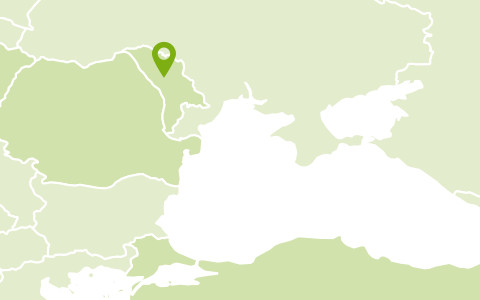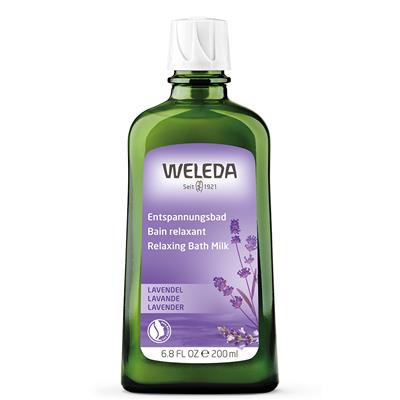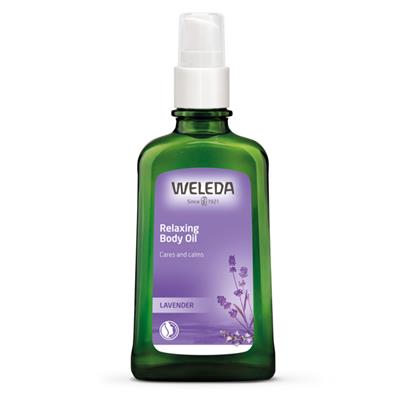Lavender
Bessarabia, Moldova

The definitive aroma for calm and relaxation
Little else is so instantly relaxing as the scent of lavender. Its deep blue flowers contain essential oils that are used to bring delicious aroma to 50 Weleda products.
Images of lavender often show the endless, violet fields of French Provence, but there is another important growing area in Europe, which has been supporting the large-scale cultivation of lavender for centuries. The tiny country of Moldova, between Romania and Ukraine, has only 34,000 square kilometres of land, but is blessed with a warm, dry climate and the fertile black soil which allows vineyards and orchards to thrive on a large scale. This perfect growing climate formed the foundation of Moldova, once known as one of the world's largest producers of essential oils. With the end of the Soviet Union in 1992 many acres of lavender disappeared as the population tried to learn the operation of free trade. Since then a lot has changed in this small country: old traditions have been revived and lavender cultivation has taken on a new lease of life.
Lavender belongs to the plant family Lamiaceae. It’s a distinctive small, rounded shrub with forked and erect branches and numerous small, purple flowers. The leaves are narrow in shape and vary in colour from grey-green on the upper sides to a furry, white underside. The genus has 25 species, of which, in alternative medicine, the following are used: true Lavender (Lavandula angustifolia), spike lavender (Lavandula latifolia), butterfly lavender (Lavandula stoechas) and lavandin (Lavandula hybrida).
Largest organic farming project
A British development expert and a Moldovan agricultural engineer initiated the largest organic farming project for lavender in the country and were astounded at how quickly the project grew. One reason for the burgeoning development is certainly cooperation with Weleda, which started in 2005. The close collaboration with Weleda and the prospect of lasting cooperation gave additional impetus to the project. "200 farming families are now involved and the organic lavender growing area has expanded to about 200 acres," says the British development expert.Once new plants are put in the ground, three years have to pass before the first major harvest – but under favourable conditions the plant can be harvested for up to thirty years. The first plants were ready to harvest in 2005 and since then, each year from late June to mid-July, the workers cut the mature flowers by hand with sickles - a labour-intensive job needing commitment and close attention.
The collected lavender is processed immediately, without even leaving the field, in a mobile distillation unit for essential oils. This requires engineering knowledge, care and sensitivity. A team of four is permanently on duty as the harvest progresses, receiving containers filled with lavender flowers, which are then connected to the mobile boiler and its steam cycle. The distillation process takes about one hour and from every 100 kg of lavender flowers just one kilo of oil is extracted.
The essential oil is then ready to be transported away from the field in barrels, which are sealed immediately. To ensure high quality it is particularly important to store the valuable lavender oil in a cool place before exporting it to Weleda.
Direct soothing effect
Modern research has shown that elements within the essential oil have a direct soothing effect on the central nervous system, helping relaxation and promoting healthy sleep. Restlessness, difficulty falling asleep, tension, cramps, indigestion or problems with the heart and circulation can be regulated more easily with lavender. This explains why, even in ancient times, lavender was very popular for its relaxing and calming effect.But through Weleda’s Moldovan partnership lavender has another positive effect: the local partner benefits from our vast experience in analysis of essential oils and the raw material procurement. Since we’ve been working together, production and harvesting has been optimised and solutions for many minor problems have been found. For instance, Weleda is helping to find a decent, environmentally-friendly solution for the composting of distillation residues. "It is a situation of mutual give and take", confirm the local partners. "Only together can we develop the desired quality."
The economic and social boost that the project gives to the rural region is noticeable after ten years. For the farmers, lavender cultivation has become an integral part of their income, and because of the partnership the village school has been extensively renovated. To celebrate Weleda’s 90th birthday, we took part in building a health and welfare center in the local town of Minceni. It’s just one example of how Weleda’s partnerships grow both our important raw materials and the communities that produce them.
Lavender Relaxing Bath Milk 200ml
Item No.
104007
£16.25
Add to basket
Lavender Relaxing Body Oil 100ml
Item No.
106116
£19.95
Add to basket



